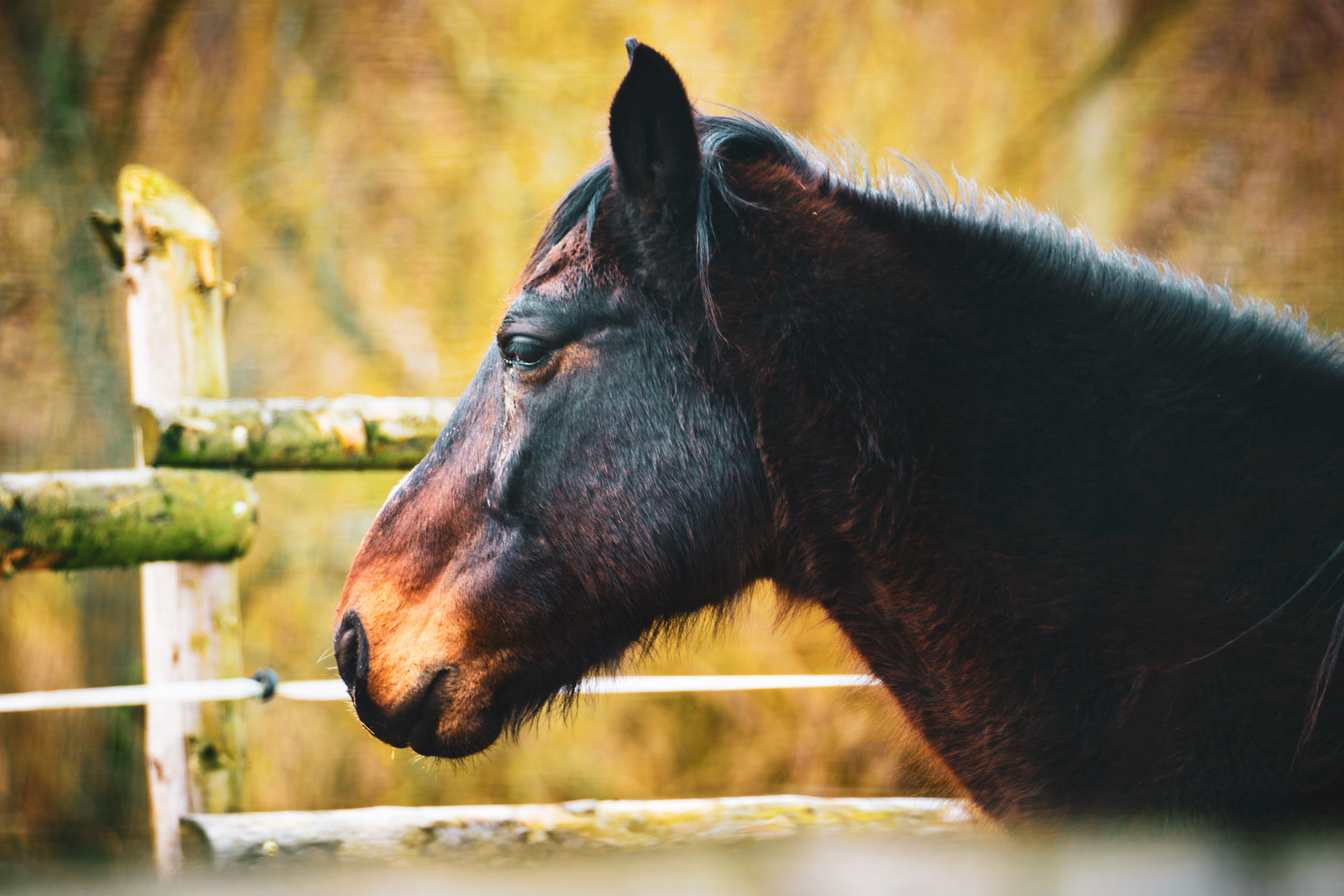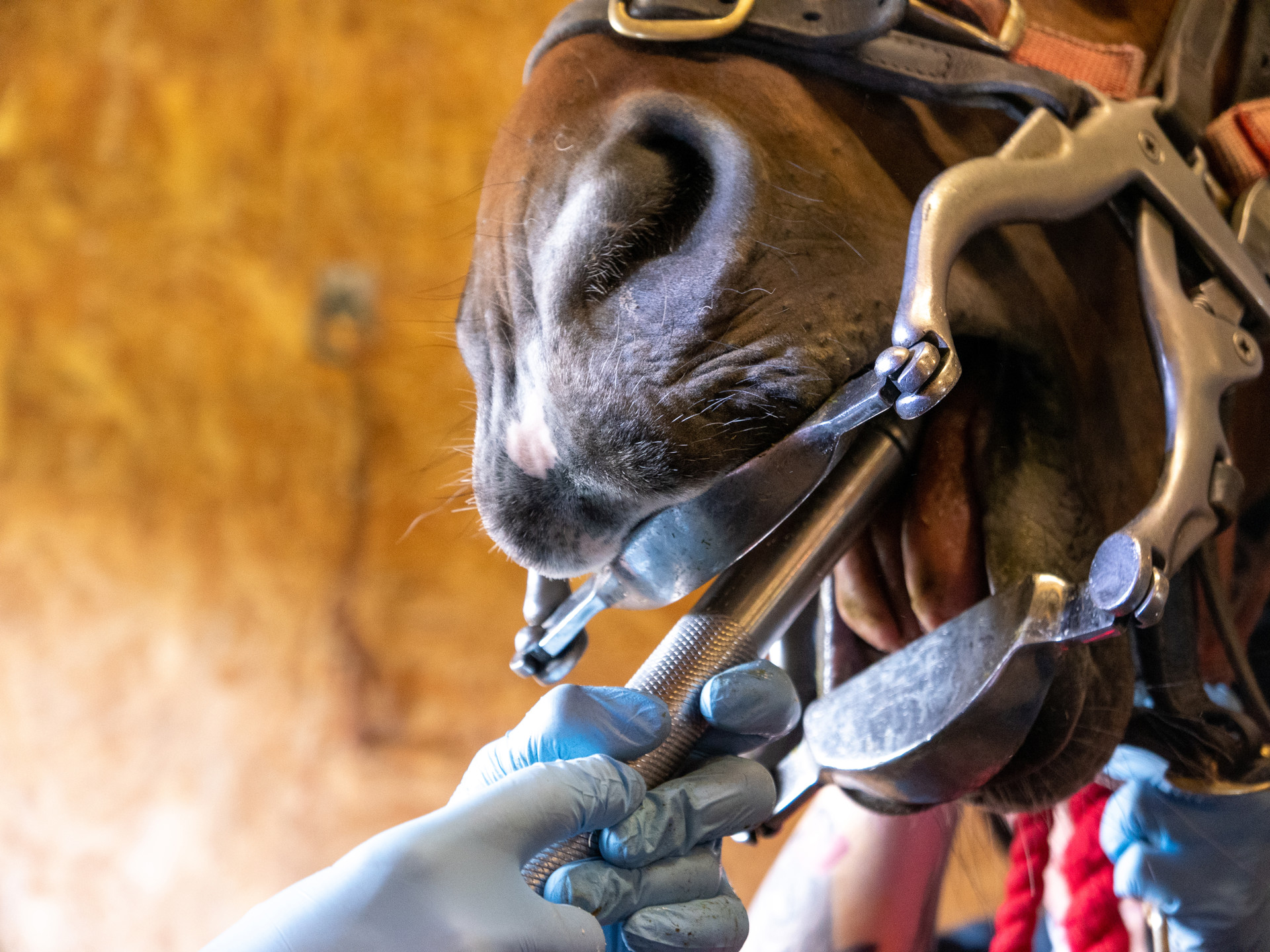Dental care in the geriatric / older horse
30 Apr 2024
Why do old horses have specific dental problems?
During the course of evolution, horses’ teeth have adapted to chew grass and fibre. In doing so the teeth wear down at a rate of two to three mm per year. This wear is balanced with eruption at an equal rate, until the horse reaches its mid to late twenties, when all of the reserve crown will have erupted. At this time the rate of wear is greater than the rate of eruption.
The grinding surface of the equine crown is a complicated arrangement of folds of enamel, dentine and cement. These structures vary in hardness and wear down at different rates (enamel being the hardest). This creates a rough grinding surface that makes the equine tooth so efficient at chewing fibre and grass. The root of the tooth has no central folds of enamel, only a single rim with the centre being mainly softer dentine and cement. This makes the root smooth centrally. When the root is exposed in later life this smooth surface means they are much less efficient at grinding fibre.
The molar and premolar (cheek) teeth are tightly packed together so the row of teeth act as a single grinding surface. Equine teeth are narrower at the root. This means that as the teeth erupt as the horse gets older gaps (diastema) start to develop. Food becomes trapped and impacted between the teeth leading to very painful gum disease (periodontal disease). Sings include bad breath, quidding, weight loss and pouching of food in the cheeks. Affected horses are more likely to develop choke and impaction colic due to poor chewing of fibre.
Untreated periodontal disease can lead to complications such as infection of the tooth root, surrounding bones and sinuses.
Diagnosis of periodontal disease is made through careful examination. All the impacted food material needs to be removed to assess the extent of gum disease. Heavy sedation is often required as these areas are very painful.

Treatment involves:
- flushing out of the impacted food material
- Antibiotics may be needed if infection found.
- Pain relief and anti-inflammatories are often needed to help with painful and inflamed gums.
- Flushing can be need every 3-6 months depending on severity.
- Diastemas may need to be widened using mechanical burrs to allow food to move freely out of the space.
- Occasionally tooth extraction is indicated in cases where severely displaced or over crowded teeth are causing issues.
A diet of short chopped grass and high fibre nuts can help to reduce the food packing. Owners can also help by flushing their horse mouth out twice daily to reduced the amount of food being impacted in the gaps.
As teeth wear down towards the root, they may become loose and displace into the surrounding soft tissue causing ulcers. They can become so loose that they may fall out. If a horse has diastema the periodontal disease can damage the ligament holding the teeth in place. When this occurs the loss of teeth may be accelerated. It is very common to find movement in many or most of the teeth in a geriatric mouth due to the limited root anchoring the tooth in place. Many of these teeth do not require extraction and should only be removed after careful assessment and consideration. If a tooth falls out or has to be removed there will be a gap in the gum. This will leave the tooth opposite it with no tooth to grind against. Without the normal wear caused by grinding, this tooth will grow tall into the gap. This could restrict mouth movement, reduce ability to grind fibre and in time this tooth may grow into the gum causing very painful damage.
These problems of wear and gum disease can also effect the incisors (front) teeth. Loss of or damage to these front incisors may affect the horse’s ability to graze, especially on short grass. Horses can cope without incisors but care must be taken to ensure good condition of cheek teeth and suitable dietary management.
Older horses can be affected by a disease of the incisors that may be related to chronic gum disease. The disease known as Equine Orthodontic Tooth Reabsorption and Hypercementosis (EOTRH) involves the destruction of the tooth enamel and reaction around their roots. The gum around the incisor teeth may be swollen with severe gingivitis and marked tartar formation. This is a painful disease and may require incisor tooth extraction or antibiotics.

The main aims of dentistry in the older horse include:
- Reduction of any sharp enamel points that may cause soft tissue injury or ulceration.
- Examination of any focal overgrowths and correction of these if they are causing injury or are affecting a horse’s ability to eat.
- Examination of loose teeth and removal only if required.
- Examination for the presence of diastema (gaps between teeth) and appropriate treatment.
Dietary considerations
As older horse’s teeth get worn down or lost, their ability to chew long fibre, such as hay/ haylage, will reduce. It is important to consider dietary management alongside routine dental treatment. Older horses may benefit from replacing some or all of the long fibre in their diet with short chop fibre such as chaff, alfalfa as these are much more easily chewed. Grass nuts are also really good because they are easily chewed or can even be soaked to form a very sloppy mash.
It is essential older horses or ponies have regular and careful dental assessments. Sedation, pain relief and local anaesthetic may be required for examination and treatment. The intervals between dental treatment will depend on the individual patient and this should be discussed with your vet.